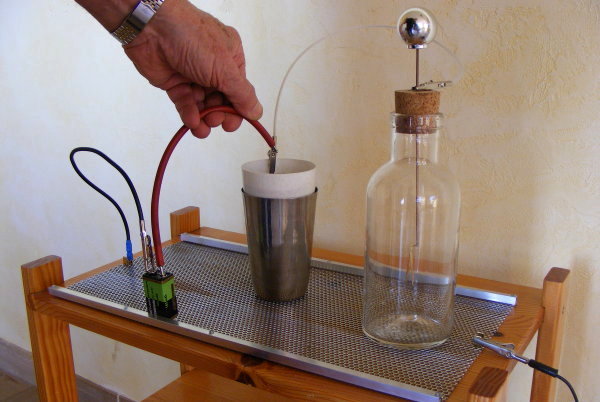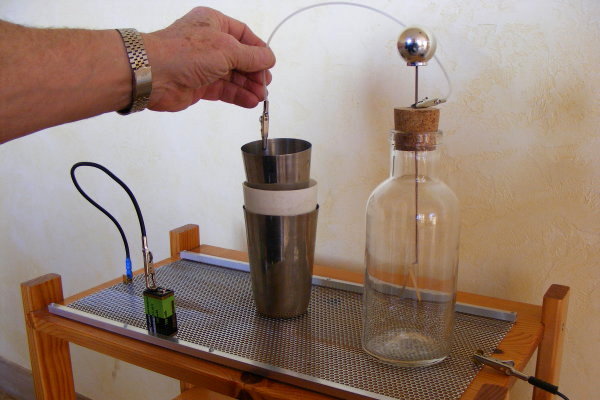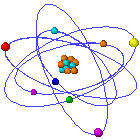|
||||||
L'électroscope à feuilles d'or
Un électroscope à feuilles d'or est constitué de deux feuilles d'or très minces fixées à une tige de métal. Etant donné leur fragilité, on les abrite dans un conteneur transparent. Quand on touche l'extémité de la tige métallique avec un corps électrisé, il y a transfert de charges. Il en résulte que les deux feuilles portent alors des charges de même signe et se repoussent, d'où une déviation notable et bien visible. Ce dispositif ne consomme pas de courant mais nécessite des tensions élevés, plusieurs milliers de volts, facilement obtenues même avec de faibles charges, vu la faible capacité propre de l'ensemble. En effet, s'applique ici la formule bien connue Q = CV laquelle implique V = Q/C On voit immédiatement que pour une charge donnée, avec C petit, V sera grand. |
||||||
Charge du condensateur
Le condensateur déchargé repose, par son armature externe, sur le plan de masse relié à la terre. Nous le chargeons en reliant momentanément son armature interne à une batterie 9 volts dont l'autre pôle est relié à la masse. Le condensateur acquiert ainsi une charge Q = CV. Nous ne constatons aucune déviation de l'électroscope car une différence de potentiel de 9 volts est bien trop faible pour produire un effet visible. |
||||||
Diminution de la capacité
Nous diminuons alors la capacité du condensateur en éloignant son armature interne. A charge constante, comme C a diminué, V s'est accru. Nous constatons alors une déviation importante de l'électroscope. CQFD. |
||||||
|
Page URL http://f3wm.free.fr/sciences/e_scope.html |
||||||
|
||||||
The gold foil electroscope
A gold foil electroscope is made of two very thin leafs of gold attached to a metal rod. Given their great fragility they are commonly sheltered in a transparent container. When an electrized piece his permitted to contact the rod, then a transfert of charges occurs. The result is that the two leafs bear then charges of the same sign and so repel each other, providing a noticeable and easily visible displacement. This device draw no current but needs hight voltages, thousands of volts, easily got even with small charges as the capacitance of the set is small. Remind you that the well known formula applies here Q = CV wich implies V = Q/C One can see immediately that for a given charge, with C small, V will be large. |
||||||
Charging the capacitor
The capacitor has its external electrode lying on the ground plane connected to earth. The internal electrode is momentarily put in contact with one of the poles of an 9 volts battery whose the other pole is grounded. So the capacitor aquire a charge Q = CV. We do not see any deviation of the electroscope, the voltage being to small to produce any visible effect. |
||||||
Diminishing the capacitance
Then we diminish the capacitance by moving away the internal electrode of the capacitor. The charge remaining constant, as C has diminished, V has grown. We see then a noticeable deviation of the electroscope. QED. |
||||||
|
More about electroscope en.wikipedia.org/wiki/Electroscope |
||||||
|
File: e_scope.html, 2008-11-17 - Robert L.E. Billon - Last update: 2010-11-06 |
||||||
